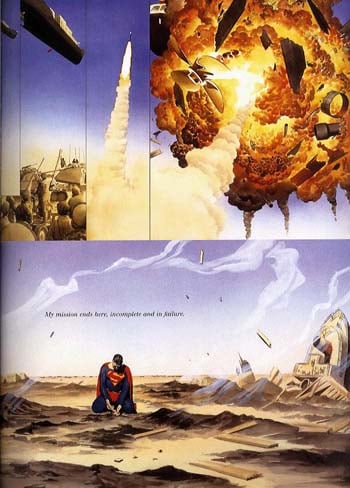
Second, it wasn't just that we saw them differently, it was as if we were allowed to really see them for the first time. First, on the page, we simply weren't used to seeing them this way.

what makes Ross's approach unique to Superman and the other DC characters is twofold. Ross' work has been called "photo-realistic" and "hyper-realistic." Both descriptions are apt, but inadequate: When Ross paints Batman surveying the darkened Gotham streets or Superman hoisting a derailed train aloft, the character isn't simply realistic. (See examples here: Superman, Batman, and a superhero gallery.) More important, he opens the door on Ross's creative process, including the evolution of his style from the Neal Adams-George Perez school of comics art to a bold vision that is uniquely his own. Writer and book designer Chip Kidd offers an insightful, if spare, biography of the artist, from his roots in Texas to his blossoming as an illustrator in Chicago. (DC Comics is a unit of Time Warner, as is CNN Pantheon Books, the publisher of "Mythology," is part of the Bertelsmann publishing group.) In books like "Kingdom Come," "Superman: Peace on Earth" and "Batman: War on Crime," his images don't merely leap off the page. His renderings of the iconic DC characters are simply astonishing.

Ross has single-handedly redefined comic book art. Simply put a bow on "Mythology: The DC Comics Art of Alex Ross" and you will earn squeals of delight and undying appreciation. (CNN) - If you know a comic book fan, your gift shopping is done.


 0 kommentar(er)
0 kommentar(er)
